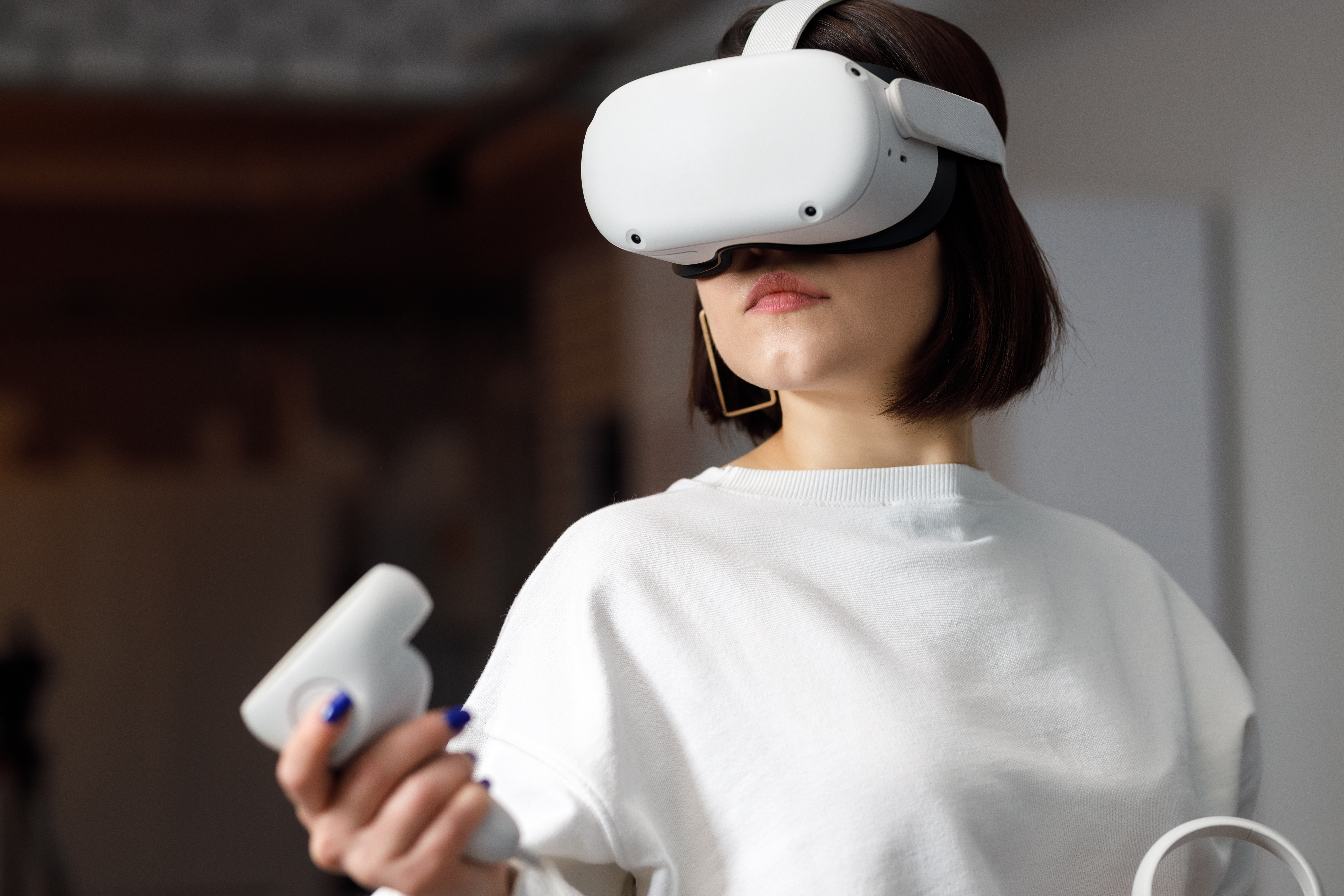The “war for talent” affects every industry — from automotive to science, manufacturing, and technical trades — all are striving to stand out and appeal to candidates. Employer branding is now a strategic lever, yet traditional tools — brochures, corporate videos, conventional job fairs — are showing their limits.
Why? Because they struggle to convey the reality of the workplace and create a genuine emotional connection with candidates. The result: a recruitment experience often perceived as distant, sometimes even disappointing.
This is where virtual reality (VR) comes into play. By allowing future employees to virtually step into their potential workplace, try out a role, or meet a team remotely, VR redefines the candidate experience. It transforms a standard recruitment process into a concrete, engaging immersion — while reinforcing a company’s image of innovation and authenticity.
Why is VR a lever for Employer branding ?
2.1. A Modern and Differentiating Image
Integrating VR into recruitment sends a strong message: the company invests in innovation and cares about the candidate experience. This positions the employer brand as modern, dynamic, and future-oriented — values especially appreciated by younger generations of talent.
2.2. Realistic Job and Workplace Preview
With VR, candidates go beyond reading a job description: they explore their future environment, visualize their tasks, and better understand the day-to-day reality of the job. This immersion narrows the gap between employer promises and actual conditions, reducing post-hire disappointment.
2.3. Addressing Hard-to-Fill Roles
Some industries suffer from an outdated or unattractive image (manufacturing, maintenance, production…). VR helps shift that perception by showcasing modern equipment, workplace safety, or career prospects. It becomes a tool to highlight essential roles that struggle to attract candidates.
2.4. Strong Emotional Engagement
Immersive experiences trigger emotions that brochures and videos simply cannot. By placing candidates in realistic scenarios, VR enhances identification and memorability — resulting in a more engaging recruitment journey.

Concrete use cases
3.1. Immersive Job Fairs and Hiring Events
Job fairs are evolving, and VR fits perfectly. Instead of handing out leaflets, recruiters provide candidates with a headset to explore the company from the inside: factory tours, immersive testimonials, or hands-on job previews. The result: a memorable experience that draws in more qualified candidates.
3.2. Job Simulation to Assess Skills
Some companies let candidates experience a typical day through VR simulators. This helps assess both technical skills (task execution, safety, coordination) and soft skills (handling unexpected events, teamwork). Candidates gain a better understanding of expectations, and companies reduce hiring mistakes.
3.3. Virtual Tours of Facilities and Teams
Even before attending an interview, candidates can explore the workplace, meet their potential colleagues or managers virtually, and get a feel for the company culture. This reassures them and establishes an early emotional connection — even remotely.
3.4. Onboarding and Pre-Integration
VR doesn’t just attract talent: it also helps onboard new hires effectively, presenting company history, values, and essential procedures from day one. This reinforces engagement right from the start.
What impact on recruitment ?
4.1. Higher Candidate-to-Interview Conversion Rates
Immersive experiences attract and engage serious candidates. Some companies have reported up to a 30% increase in qualified applications after introducing VR into their recruitment events.
4.2. Lower Turnover and Fewer Dropouts
By allowing candidates to experience the reality of the job before signing, VR minimizes early-stage attrition. Candidates know what to expect, reducing failed probation periods and early resignations.

4.3. Time Savings for Recruiters
VR pre-selection helps quickly identify candidates with key skills. Fewer unnecessary interviews mean more time to focus on high-potential profiles.
4.4. Long-Term Employer Brand Value
Every immersive experience leaves a positive impression, even for unsuccessful candidates. This improves overall perception and increases the likelihood of word-of-mouth recommendations within professional networks.
How to start a VR project in recruitment ?
5.1. Set Clear HR Objectives
First, identify what VR should achieve: attract more qualified applicants? Reduce turnover? Modernize your employer image? Clear goals shape the right experience and success metrics.
5.2. Choose the Right Immersive Scenario
Each need calls for a different approach:
- Presenting the company and its roles.
- Simulating a specific job to assess skills.
The key: keep it short, seamless, and impactful.
5.3. Involve the Right Stakeholders
Success depends on cross-functional collaboration:
- HR/recruitment to define needs and candidate profiles.
- Marketing/communications to promote and distribute the experience.
- Training or technical teams to ensure accuracy and relevance.
5.4. Start Small, Measure, Adjust
There’s no need for a massive rollout at first. A pilot on a key role or a specific recruitment event allows you to test impact, gather candidate feedback, and fine-tune before scaling up.
5.5. Capitalize on Results
Collected data (participation rate, candidate satisfaction, conversion metrics) should feed both internal reporting and broader employer brand communication.
Conclusion
Virtual reality is no longer a futuristic technology — it’s already reshaping how companies attract and engage talent. By making recruitment more immersive, transparent, and memorable, VR helps organizations attract the right candidates, reduce hiring mistakes, and strengthen their employer brand for the long term.
Rather than relying on promises alone, it allows candidates to experience the company firsthand and commit with full awareness.
Early adopters are already seeing measurable results: more qualified applicants, lower turnover, and a refreshed image that resonates with new generations of professionals.
If your organization is looking to transform its recruitment strategy, integrating VR can be a strategic step forward — provided it’s aligned with your HR goals and embedded in a holistic employer brand approach.
r les objectifs et de l’inscrire dans une démarche globale de marque employeur.




